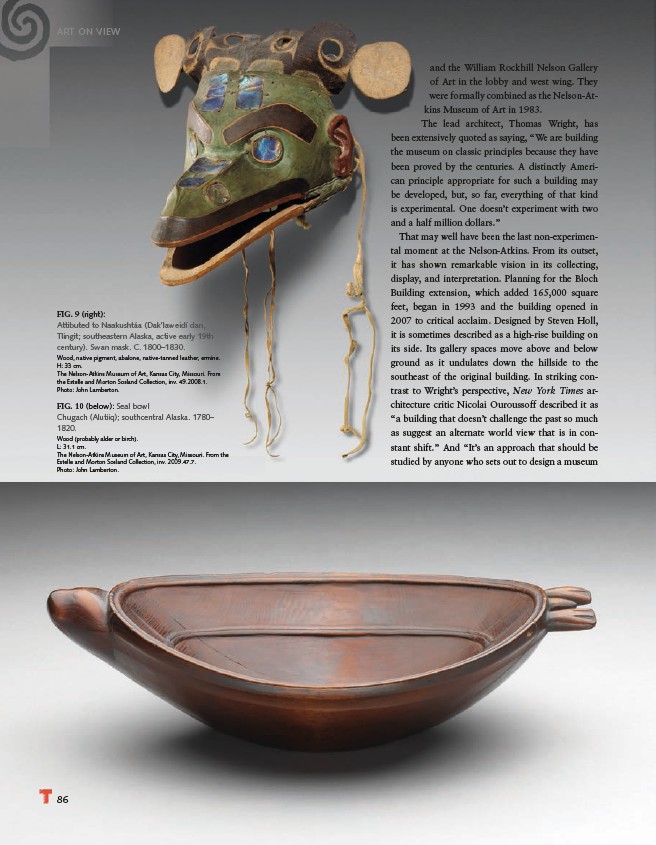
ART ON VIEW
86
and the William Rockhill Nelson Gallery
of Art in the lobby and west wing. They
were formally combined as the Nelson-Atkins
Museum of Art in 1983.
The lead architect, Thomas Wright, has
been extensively quoted as saying, “We are building
the museum on classic principles because they have
been proved by the centuries. A distinctly American
principle appropriate for such a building may
be developed, but, so far, everything of that kind
is experimental. One doesn’t experiment with two
and a half million dollars.”
That may well have been the last non-experimental
moment at the Nelson-Atkins. From its outset,
it has shown remarkable vision in its collecting,
display, and interpretation. Planning for the Bloch
Building extension, which added 165,000 square
feet, began in 1993 and the building opened in
2007 to critical acclaim. Designed by Steven Holl,
it is sometimes described as a high-rise building on
its side. Its gallery spaces move above and below
ground as it undulates down the hillside to the
southeast of the original building. In striking contrast
to Wright’s perspective, New York Times architecture
critic Nicolai Ouroussoff described it as
“a building that doesn’t challenge the past so much
as suggest an alternate world view that is in constant
shift.” And “It’s an approach that should be
studied by anyone who sets out to design a museum
FIG. 9 (right):
Attibuted to Naakushtáa (Dak’laweidí clan,
Tlingit; southeastern Alaska, active early 19th
century). Swan mask. C. 1800–1830.
Wood, native pigment, abalone, native-tanned leather, ermine.
H: 33 cm.
The Nelson-Atkins Museum of Art, Kansas City, Missouri. From
the Estelle and Morton Sosland Collection, inv. 49.2008.1.
Photo: John Lamberton.
FIG. 10 (below): SeaI bowI
Chugach (Alutiiq); southcentral Alaska. 1780–
1820.
Wood (probably alder or birch).
L: 31.1 cm.
The Nelson-Atkins Museum of Art, Kansas City, Missouri. From the
Estelle and Morton Sosland Collection, inv. 2009.47.7.
Photo: John Lamberton.